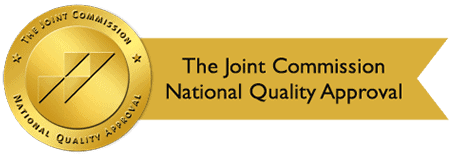By: Design for Change Recovery
Categories:
Media Glorification of Substance Use Has Harmful Consequences
You are here:Media glorification of substance use has become increasingly problematic as technology has advanced. Today’s society is inundated with social media posts, movies, and music that endorse drugs and alcohol.
Throughout American history, media outlets have presented countless images of drug and alcohol misuse or inappropriate use. Most of the time, substance use is depicted as a way to socialize, relieve stress, and enjoy a sense of euphoria. Seldom do they emphasize the consequences of substance use.
How Widespread Is Media Glorification of Substance Use?
The U.S. Census Bureau estimates that about 92% of all American households have a computer and 85% have internet access. The survey considered laptops, tablets, desktops, and smartphones as computers. With so many people using technology, it’s no surprise they are repeatedly exposed to substance use in the media.
The prevalence of substance use depictions in media outlets is revealed in the following statistics:
Genres with the most drug or alcohol mention:
- Comedy– 41%
- Crime – 17%
- Drama – 17%
- Action – 15%
- Adventure – 2%
- Animations – 6%
- Other – 2%
Shows with the most drug or alcohol mentions:
- Cops – 1.155 mentions
- CSI – 933 mentions
- The Simpsons – 828 mentions
- Cheers – 785 mentions
- Law & Order – 774 mentions
In some instances, media influence on substance use can contribute to the stigma surrounding substance use. The shows either villainize or romanticize a person with SUD, leaving viewers in a state of confusion.
Connection Between Media Glorification of Substance Use and Addiction
Teens are naturally curious and want to try new things. They often experiment with drugs and alcohol as part of their quest for thrills. Many teens learn about alcohol and club drugs on social media platforms. Since teens are prone to overshare on social media, it’s easy to find out where to get alcohol or illicit drugs.
Social media is also a place to connect with favorite celebrities or influencers. Far too often, their posts will include images of them drinking or getting high. Teens often want to initiate what they’ve seen, mistakenly thinking it’s normal because everyone does it.
The National Center on Addiction and Substance Misuse or inappropriate use at Columbia University surveyed 2,000 teens and 70% of them said they use social media daily. Studies show that teens who use social media regularly are more likely to use addictive substances. Also, 90% of teens admit they see photos on social networking sites of people drinking alcohol or smoking pot.
Advertising of Drugs, Alcohol, and Cigarettes on Social Media
Some alcohol, tobacco, and e-cigarette manufacturers play a role in the media’s glorification of substance use. They use social media platforms to market their products, despite knowing teens access the platforms daily.
Standards for responsible alcohol marketing are in place that restrict the advertising of these substances to teens. Even so, manufacturers have found sneaky ways to promote their products online. They may use some of these unethical methods:
- Pop-up ads that redirect to a specific promotion
- Gathering personal data of people who look at the alcohol content
- Polls or questions that engage “fans”
- Paying social media influences to share photos of themselves with an alcoholic beverage
Advertisers target adults as well as teens, and the ads generate a 600% higher return on investment than traditional advertising.
A report published by the National Library of Medicine states the following about digital marketing:
“Although more research is needed, existing studies suggest that engagement with digital alcohol marketing is positively associated with increased alcohol consumption and increased binge or hazardous drinking behavior.”
Substance use is widespread across the internet on social media, apps, and websites. As such, media influence on substance use is gaining momentum and will have a detrimental effect on millions of people.
How to Minimize Media Glorification of Substance Use
Here are a few things you can do If you are concerned about the consequences of media influence on substance use:
- Limit the number of alcohol ads by changing privacy settings on social media accounts.
- Report inappropriate or offensive posts.
- Talk to your teen about the ways advertisers target young people. Monitor their social media use if you think it is necessary.
- Educate your teens about the harmful effects of substance misuse or inappropriate use.
Teens want to be popular and social media is an easy way to achieve that. But, they don’t often consider the risks of posting personal information or clicking on ads. As a result, they find themselves in the crosshairs of devious people who seek to profit from their online activity.
Live a Drug-Free Life With Help from Design for Change
Media glorification of substance use has convinced millions of people that drinking and getting high is an acceptable social activity. As a consequence, more and more individuals need professional treatment to overcome their addictions. Many overdose deaths are caused by people who are unable to overcome substance misuse or inappropriate use on their own.
At Design for Change Recovery, we recognize the importance of providing affordable, effective addiction treatment. Our programs are specially tailored to address not only the physical dependence on a substance, but the emotional, mental, and behavioral aspects as well. With this integrated approach, our client’s graduate equipped with the knowledge and skills to avoid future substance misuse or inappropriate use.
If someone you love struggles with drug or alcohol use, contact our Lancaster, CA facility today. We will be happy to tell you about our program and design a treatment plan, especially for your needs.
Sources:
- ncbi.nlm.nih.gov/ – Exposure to Digital Alcohol Marketing and Alcohol Use: A Systematic Review
- adf.org.au/– Alcohol Advertising, Social Media, and Young People
- projectknow.com/ – How Does the Media and Television Influence Drug Use?


